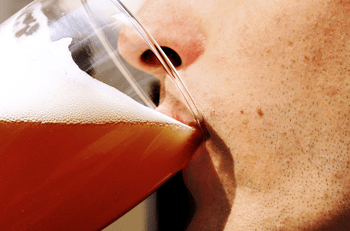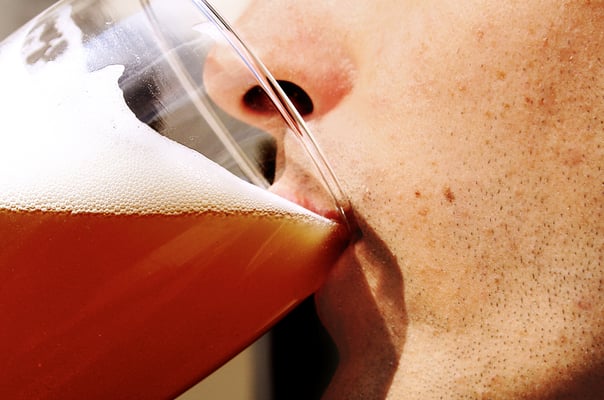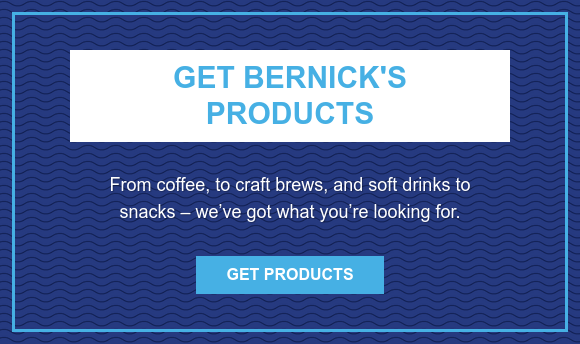In spite of all the technological advances that have impacted the beer industry, at the end of the day, breweries still rely on the age-old practice of monitoring their products using human sensory analysis. This practice is also known as 'Beer Sensory'.
That's right - whether you prefer the coffee notes of Guinness Stout, or the smooth mouthfeel and grainy undertones of a frosty Miller High Life, you can thank the brewery's expert Sensory Analyst for using their senses of sight, smell, taste, and touch to help produce a consistent, high-quality product.
What Exactly Is Beer Sensory?
 There are thousands of flavor compounds and elements that contribute to the character of a beer. According to the chemical-education website Compound Interest, the hops alone have upwards of 250 unique essential oils! The combination and chemical reactions between all these different acids, esters, and essential oils is what gives each brand of beer it's own distinct look, feel, and taste.
There are thousands of flavor compounds and elements that contribute to the character of a beer. According to the chemical-education website Compound Interest, the hops alone have upwards of 250 unique essential oils! The combination and chemical reactions between all these different acids, esters, and essential oils is what gives each brand of beer it's own distinct look, feel, and taste.
In a nutshell, Beer Sensory is the art and science of using four of the five senses to evaluate and describe the flavors and qualities of beer. Beer Sensory focuses on specific elements related to the taste, look, smell, and mouthfeel while tasting beer; it's what brewers and beer judges use to assess the qualities of each particular brew, including defects and 'off flavors'.
In commercial breweries, professional beer testers constantly check each batch of beer using strict sensory analysis guidelines and sensory kits that serve as reference points for distinct aromas, colors, and flavors. These highly skilled, in demand professionals often hold degrees in chemistry supplemented by specialized training in sensory testing that fine tunes their senses, giving them the ability to quickly identify specific elements within a beer throughout the brewing process.
The resurgence of craft breweries, brewpubs, and the unwavering popularity of beer in general has made beer sensory popular among consumers who want to delve into what makes their favorite brew distinct. Many colleges and universities are now jumping on the beer sensory bandwagon, offering both continuing education and credit courses in the 'Sensory Evaluation' of beer.
Beer Sensory For Beginners
Thankfully, you don't need a PhD in chemistry to learn the basics of beer sensory - with a little know how, any beer lover can enhance their beer drinking experience by concentrating on how the beverage looks, smells, tastes and the mouthfeel, using the "Beer Flavor Wheel". Created in the 1970s by Morten Meilgaard, a Danish chemist who focused on yeasts, this multi-layer wheel breaks down beer flavors and aromas into descriptors of flavors, aromas, and qualities like 'sulfury', 'yeasty', and 'leathery'.
Before you take a sip of your next beer, take a moment to assess what it looks like (of course, this step is much easier if you're drinking from clean glassware)! A cold-filtered, medium-bodied beer like Miller Genuine Draft will be clear, while a UK-style Summit Oatmeal Stout from Summit Brewing will be dark and opaque. You may begin to find similarities in beers of the same colors, however a beer cannot be judged by its appearance alone.
Next, it's time to appreciate the smell of your beverage - take the time to identify distinct aromas such as fruit, wood, herbs, and smokiness; the smell of the beer has a big impact on the overall consumer experience.
Now that you've assessed the look and smell of your beer, take a taste, letting the beer linger in your mouth. A moderately carbonated, full bodied brew will deliver a highly satisfying 'mouthfeel', while a flat, weak beer will negatively impact all other aspects of your beer sensory experience.
Lastly, think about the taste of the beer - try to pick out distinct flavors that describe what you've detected. This is where Meilgaard's wheel comes in handy!
Once you've learned the basics of beer sensory, chances are good you'll develop a greater appreciation for, and enjoyment of, your favorite brews!



